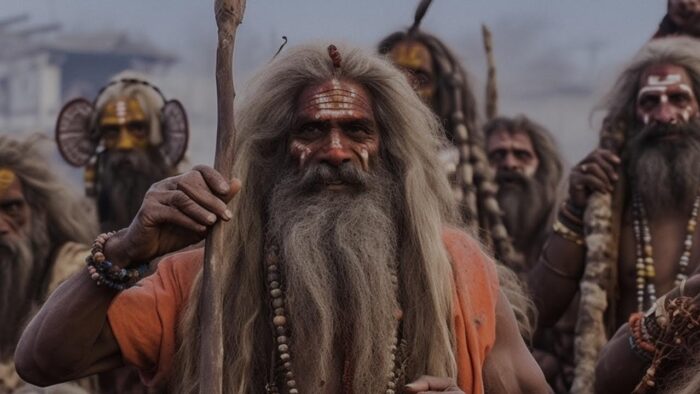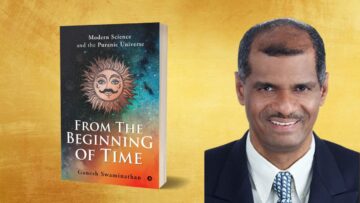We are pleased to announce a call for papers for a Thirtha Yatra & Conference on Kumbha Mela and Pushkaram to be held on December 1st & 2nd 2023 at Prayagraj, UP.
Background
The Kumbha Mela, the world’s largest religious congregation, can be viewed as a significant aspect of Hindu culture known as ‘teertha yatra’ or pilgrimage, which is considered a vital sacred ritual act.
Pilgrimages are generally based on the spiritual power of a place, known as ‘kshetra maahaatmya’, which is believed to provide worldly and otherworldly benefits through spiritual merit. Some of these spiritually endowed places, known as ‘teerthas’, are water bodies such as lakes, waterfalls, springs, brooks, streams, or rivers. The benefits are obtained through bathing in their waters and performing rituals on their banks.
In addition to the power of a place, there is a Hindu concept of the power of time called ‘parva maahaatmya’, which is associated with astronomical positions, natural cycles, and seasons. Parva refers to an auspicious time or day. Kumbha Melas are interesting because they are based on both the spiritual power of a teertha, which is a river, and the auspicious time determined by certain astronomical positions. For example, the Kumbha Mela at Haridwar occurs when Jupiter is in the Zodiac Sign Kumbha (Aquarius) and the Sun is in the Zodiac Sign Mesha (Aries). Kumbh Melas also take place in Ujjain when Jupiter is in Simha (Leo) and the Sun is in Mesha (Aries), in Prayag when Jupiter is in Mesha and the Sun is in Makara, and in Nasik when Jupiter and the Sun both are in Simha (Leo). The word ‘Kumbha’ in Kumbha Mela is connected to the name of the Zodiac Sign Kumbha for the Haridwar Kumbha Mela, and this name spread to the fairs at other kshetras, namely Prayag, Ujjain, and Nasik. However, the current interpretation associates the word ‘Kumbha’ with the pot of Amrita (nectar) that emerged from the ocean of milk during the churning of the ocean, as described in various Puranas. It is believed that drops of Amrita are dropped into the respective rivers during the Kumbha Melas.
Kumbha Melas occur every 12 years at each river due to the 12-year cycles of Jupiter’s movement in the Zodiac.
Pushkaram / Pushkaraalu
Another similar practice in Hinduism is Pushkaram, which is followed mostly in South India. The word ‘Pushakaram’ is often used in its plural form, ‘Pushkaraalu’, in Telugu. Pushkaram shares common features with Kumbh Mela, as it is also based on the belief in the spiritual power of a river and occurs during a specific astronomical event, again based on the position of Jupiter in a Zodiac Sign. However, unlike Kumbh Mela, Pushkaram only takes into account only the position of Jupiter and does not consider the Sun’s position. Pushkaram also occurs in 12-year cycles. Devotees gather in large numbers at the respective rivers during Pushkaraalu to take a bath and perform rituals on the riverbanks. The rivers associated with Pushkaraalu include Ganga, Narmada, Saraswati, Yamuna, Krishna, Cauvery, Bhima, Tamraparni, Tapati, Tungabhadra, and Sindhu, corresponding to Jupiter’s entry into Mesha, Vrishabha, Mithuna, Karkataka, Simha, Kanya, Tula, Vrishchika, Dhanus, Makara, Kumbha, and Meena respectively.
The term ‘Pushkara’ has widespread usage in Sanskrit, both in connection with the 12-year cycle river bathing congregation of Hindus and in other contexts. It often carries the meaning of spiritual cleansing, nourishment, and divinity. The Sanskrit root ‘push’ means to nourish. In the context of Pushkaram, it signifies spiritually nourishing or divinity-providing locations.
Antiquity of Kumbha Mela and Pushkaram
There are debates regarding the ancient origins of Kumbh Mela and Pushkaram. However, there are narratives in Puranas like the Padma Purana that mention Pushkara kshetra and Pushkara Teertha. According to one narrative in the Srishti Khanda of Padma Purana, Brahma deva granted a boon to the trees of the Pushkara Forest, which led to the creation of a lake after he threw a lotus. Brahma appeared to the devatas only after they meditated upon him and declared that the place would be called Pushkara because of the lotus. Other Puranas describe Pushkara Forest/Lake as a devata associated with the best of the Kshetras/Teerthas, where devatas, pitr devatas, and rishis reside.
Similar narratives in Puranas describe the same Pushkara shrine or devata entering various rivers during Pushkara times, bringing spiritual and divine efficacy to favour ancestral worship rituals and the presence of devatas, pitr devatas, and rishis.
The antiquity of these Puranic narratives establishes the ancient origin of the Kshetra and Parva maahaatmya associated with Pushkaram and the teertha yatra (pilgrimage) and associated karma kaanda (rituals) of Pushkaram. Since both Kumbh Mela and Pushkaram share a common association with Jupiter and its 12-year cycles, these narratives can also be argued to establish the antiquity of the Kshetra and Parva maahaatmya associated with Kumbh Mela and its pilgrimage rituals.
Contemporary Significance
Today, Kumbha Melas and Pushkaram are gaining attention worldwide due to the challenges involved in organizing such large-scale congregations of people and the demonstrated success in managing them. There is significant interest in the Kumbha Mela due to the rare appearance of various interesting Hindu practices and practitioners, such as Naga Sadhus, who otherwise lead secluded lives in remote places outside the festive fair. The interactions between common Hindu devotees and these practitioners as well as the interactions among the practitioners themselves and with researchers have been widely discussed. These discussions often touch upon the understanding, misunderstanding, representation, and misrepresentation of these aspects of Hinduism. Additionally, there are numerous reports and publications focusing on health, hygiene, and their management by both individuals and the government during these large gatherings. The economy and business implications, ranging from street vending to the tourism industry, also generate considerable interest. Although there is media coverage of the sacred and ritualistic aspects, scriptural knowledge, and guidance from spiritual leaders during their discourses at the fair, the in-depth details of such content often go unexplored.
INDICA previously conducted a conference on ‘Yatra and its significance for Hinduism’, covering ancient Indian literature, cultural information, contemporary literature, and practices in the tourism industry. Now, INDICA intends to organize a conference on the topic of ‘Kumbha Mela and Pushkaram’ as an extension of that work, with a specialized focus on the aspect of pilgrimage fairs. This conference also aims to build upon the seminar, conducted by INDICA, on the ’Significance of rituals in Hindu culture’ by focusing specifically on the karma aspects of teertha- and parva maahaatmya-based activities at these pilgrimage fairs.
Suggested topics for papers include textual sources, teertha maahaatmya literature for different rivers, astronomical and astrological studies, details of karma/rituals—instructed and practised, examination of ‘exotic’ Hindu practices and practitioners like Naga Sadhus, contemporary fieldwork research, administrative and policy studies, studies on health and hygiene, tourism aspects, economic and business considerations, and intercultural and integrational aspects.
INDICA invites scholars to present papers on the above topics or any other topics related to Kumbha Mela and Pushkaram. Abstracts should be submitted to namaste@indica.org.in on or before 31 August 2023. Selected papers should submit the final papers by 31 October 2023.
The conference will be curated by Dr Nagaraj Paturi, Dean IKS, INDICA and will be conducted on 1 and 2 December 2023 at Prayagraj, UP.






